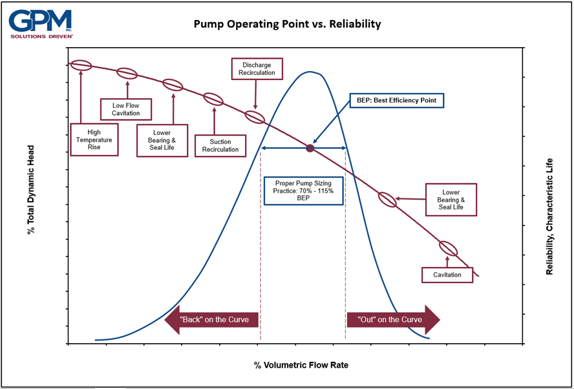By Blake Kolquist on May 11, 2021 10:49:08 AM
Whether you are going to be installing a pump into a new system, changing or upgrading a current system or simply looking to identify ways to extend the Mean Time Between Failures (MTBF), proper pump sizing is one the most critical exercises you should do. Period.
Incorrectly sized pumps and/or changes to the pumping systems over time such as added valves, piping modifications or even a change in motor size/speed have dramatic effects on pump performance and reliability. Most pumps are specifically engineered and designed to operate within a given range of hydraulic performance. When properly sized, pumps should give you maximum life and performance while also allowing for a more predictable maintenance schedule. Predicable and routine maintenance minimizes downtime ensuring process efficiency which helps the bottom line.
When pumps operate for long periods outside of that designed window is when trouble starts to occur. What kind of trouble are we talking about? Please see the image below:

As you can see, a "general" operating range for pumps as it relates to volumetric flow and total dynamic head is operating between 70-115% of the Best Efficiency Point (BEP). When the pump operates for extended periods of time outside of that range of the BEP, pump reliability becomes a major concern, especially as it relates to:
❌Temperature rise
❌Cavitation
❌Recirculation
❌Shaft deflection
❌Seal life
❌Bearing life
Whether the pump is operating "back" on the curve (to the left of BEP) or "out" on the curve (to the right of BEP), the chances for failure increases over time and in some extreme cases, can happen instantaneously!
Proper pump sizing is a science taking multiple factors into the equation. If you are looking for help to properly size a new pump, making changes to your existing system or want to extend the MTBF, the experienced GPM Team can help you with every step of the way!

.jpg)

